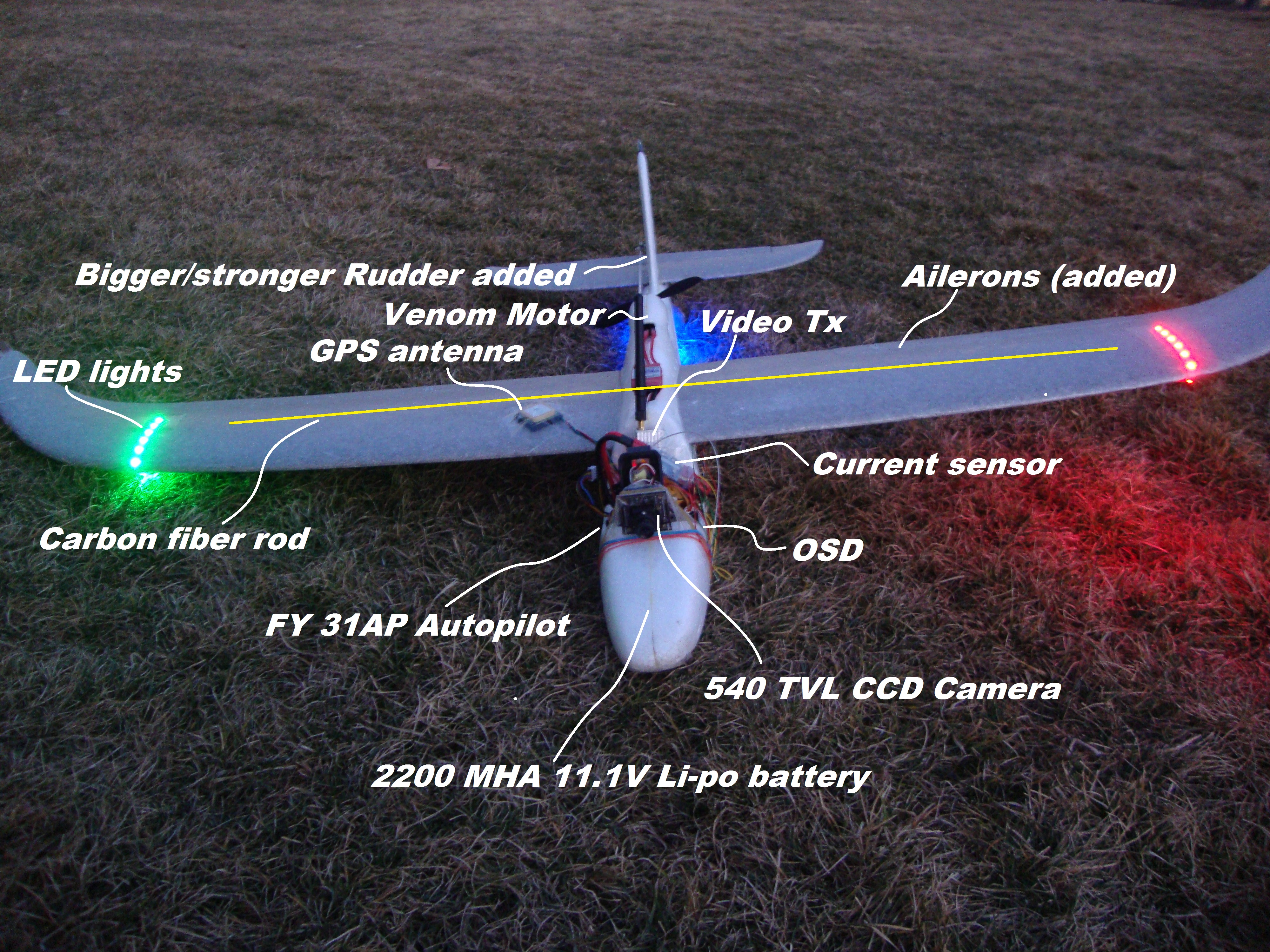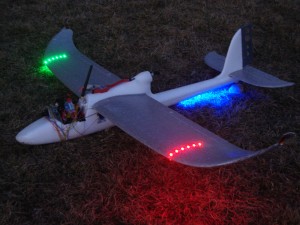In order to make a drone we must first understand, what a drone is.
What is a Drone (by my definition): “A Drone is an autonomous vehicles capable of completing some kind of task or mission.” A drone requires the following components.
Need a Vehicle: With the definition of a Drone in mind, we understand that a drone can be any vehicle, airplane, car, boat, etc.
Need to be able to control the Vehicle: The Vehicle needs to have a means to act which generally results in many of the same components used in Radio Controlled vehicles, Battery, Radio receiver (RX), Transmitter (Tx), servos, and motors.
Need a controller/autopilot: What makes a drone unique is that it can act autonomously. Therefore there must be some sort of processor, computer or something that acts as an autopilot.
What do you want the Drone to do?
Now that we understand what a drone is, and the basic components of a drone. We must define what we want the drone to do.
Uses for Drones: There are many uses for a drone, common uses include:
– Photography, surveillance, monitoring (sensing) 
– Package delivery
– Defense: finding and terminating enemy targets (This is the use the media loves to focus on)
– search and rescue: locating lost persons from the air
– agriculture: spraying crops
: The basic reason for defining the mission of the drone is to find out which vehicle will work best, what type of sensors do you need etc.
Here are a few drones that I have worked on along with some of their characteristics, and advantages / disadvantages.
Easystar Drone: (detailed build log here)
Characteristics:
– Speed: between 20-90 MPH
– Endurance: Between 15-45 Minutes
– Portability: Can be easily transported by car
– Durability: anything more than casual contact will damage it.
– Cost to purchase: around $300 USD
– Cost to operate: assuming no damage > $1.00 per flight hour.
– Weight (total flying weight):
– Weight (payload):
Advantages:
– Relatively stable flying platform
– Unobstructed forward view.
Disadvantages:
– Requires open area for landing (about 200 ft)


